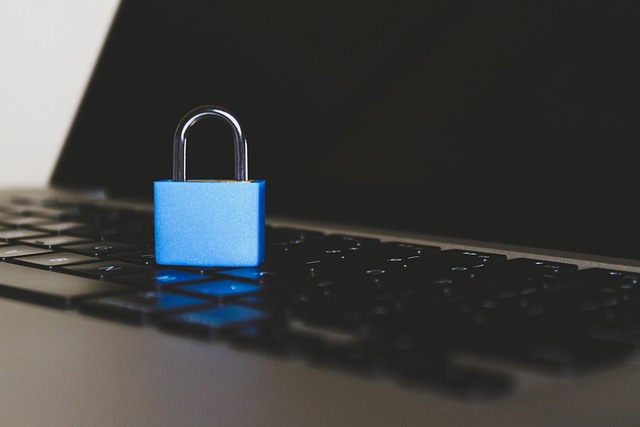For Certified Public Accountants (CPAs), regulatory compliance is paramount, ensuring data security, accurate reporting, and public trust through robust secure CPA infrastructure. This involves advanced IT tools for data protection, access controls, secure communication, detailed audit trails, and mandated data retention policies. Risk assessment identifies vulnerabilities in data storage, transmission, and processing, prompting proactive measures like encryption, multi-factor authentication (MFA), and role-based access restrictions to uphold the CIA triad (confidentiality, integrity, availability). Regular audits, strict access controls, data validation processes, and effective backup systems maintain data integrity within regulatory data systems. Continuous monitoring and compliance checks safeguard sensitive client information, promote business continuity, and enhance CPAs' credibility.
“In the dynamic landscape of finance and accounting, Certified Public Accountants (CPAs) face mounting pressure to ensure their IT systems meet stringent regulatory compliance standards. This article serves as a comprehensive guide for navigating this intricate process. We explore essential requirements, from understanding evolving regulations to implementing robust security measures in financial IT infrastructure. By delving into best practices, access controls, data integrity protocols, and continuous monitoring, CPAs can maintain compliance, safeguard sensitive data, and foster a secure environment.”
- Understanding Regulatory Compliance for CPAs: An Overview of Essential Requirements
- Identifying Risks and Gaps in Current Financial IT Systems
- Best Practices for Secure CPA Infrastructure: Protecting Sensitive Data
- Implementing Robust Access Controls and User Management Strategies
- Ensuring Data Integrity, Backup, and Recovery Mechanisms
- Continuous Monitoring and Audit: Maintaining Compliance Over Time
Understanding Regulatory Compliance for CPAs: An Overview of Essential Requirements

For Certified Public Accountants (CPAs), navigating regulatory compliance is an integral part of their professional responsibilities. Understanding and adhering to relevant regulations is crucial to maintaining integrity in financial reporting and ensuring public trust. Regulatory compliance for CPAs involves a comprehensive set of requirements that span data security, record-keeping, and audit processes.
At the core of these requirements lies the need for a secure CPA infrastructure, including robust accounting compliance IT tools that can efficiently manage and protect sensitive financial data. Essential components include stringent access controls, secure communication channels, and detailed audit trails IT systems that track every transaction. Additionally, CPAs must implement effective data retention policies, ensuring that all relevant records are preserved for the required period, as mandated by regulatory bodies. Such practices not only facilitate smooth audits but also serve as a safeguard against potential financial misstatements or fraudulent activities.
Identifying Risks and Gaps in Current Financial IT Systems

Identifying risks and gaps in current financial IT systems is a critical step for CPAs aiming to maintain regulatory compliance. Securing a robust CPA infrastructure involves comprehensive risk assessment, which uncovers potential vulnerabilities in data storage, transmission, and processing. By meticulously evaluating existing systems, professionals can pinpoint areas where regulatory standards may be falling short. This process includes assessing data retention policies, ensuring proper access controls, and verifying the integrity of financial records within these systems.
Compliance monitoring necessitates a proactive approach to addressing identified gaps. Implementing robust data governance practices, such as regular security audits and encryption for sensitive information, helps maintain the confidentiality, integrity, and availability (CIA) triad. Additionally, integrating regulatory data systems that align with industry best practices facilitates efficient compliance tracking and reporting, ensuring CPAs stay ahead of evolving legal requirements.
Best Practices for Secure CPA Infrastructure: Protecting Sensitive Data

To safeguard sensitive financial data, CPAs must establish robust best practices for their secure CPA infrastructure. This begins with implementing stringent access controls accounting for user permissions and roles, ensuring that only authorized personnel can access critical regulatory data systems. Regular security audits and vulnerability assessments are vital to identifying and patching potential weaknesses in the system.
Data retention policies should be clearly defined, aligning with industry standards and regulatory requirements. Secure data storage methods, including encryption at rest and in transit, are essential to protect against unauthorized access or breaches. Furthermore, implementing multi-factor authentication (MFA) adds an extra layer of security, making it more challenging for malicious actors to gain entry, even if they obtain sensitive credentials.
Implementing Robust Access Controls and User Management Strategies

To ensure a secure CPA infrastructure that meets regulatory compliance requirements, robust access controls and strategic user management are paramount. Implementing strict identity verification processes, such as multi-factor authentication, helps safeguard sensitive financial data within accounting compliance IT tools. By restricting access based on roles and responsibilities, CPAs can limit unauthorized usage of regulatory data systems, minimizing the risk of breaches or errors that could hinder compliance monitoring efforts.
Moreover, regular reviews and updates to user permissions are crucial for maintaining a dynamic security posture. This involves promptly revoking access for former employees, suspending accounts during investigations, and periodically auditing user activities. Such proactive measures contribute to the overall integrity of financial IT systems, facilitating effective compliance with regulatory standards while upholding the confidentiality, integrity, and availability (CIA) triad for secure CPA operations.
Ensuring Data Integrity, Backup, and Recovery Mechanisms

Maintaining data integrity is a cornerstone of secure CPA infrastructure. To ensure accuracy and consistency, financial IT systems must implement robust processes for data validation, error detection, and correction. This involves regular checks and balances, cross-referencing, and automated verification to prevent unauthorized alterations or accidental data loss. By upholding strict data integrity standards, CPAs can instill confidence in the reliability of financial records, enhancing their credibility during audits and promoting public trust.
Effective backup and recovery mechanisms are equally vital for securing CPA operations. Regular, secure backups safeguard against data breaches, system failures, or human errors that could lead to permanent data loss. Audit trails IT logs should be meticulously documented and preserved to enable comprehensive IT audits for accountants, ensuring accountability and facilitating quick recovery in case of any incidents. These measures not only protect sensitive client information but also ensure business continuity, allowing CPAs to swiftly respond to unforeseen challenges without compromising compliance requirements.
Continuous Monitoring and Audit: Maintaining Compliance Over Time

Maintaining compliance with regulatory requirements is an ongoing process for CPAs, particularly when dealing with financial IT systems. Continuous monitoring and audit are essential components in ensuring a secure CPA infrastructure that meets the highest standards. Regular, thorough checks on access controls accounting practices, along with robust file security measures, help to safeguard sensitive data within regulatory data systems.
By implementing comprehensive monitoring, CPAs can identify potential vulnerabilities or deviations from compliant practices promptly. This proactive approach allows for immediate corrective actions, ensuring that the secure CPA infrastructure remains intact over time. Regular audits also serve as a deterrent to any potential non-compliance, fostering an environment of accountability and integrity within financial IT operations.
